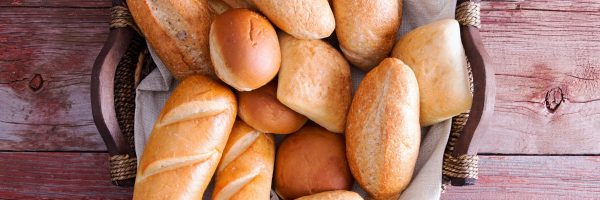A variety of definitions of fiber currently exist worldwide. As nutrition labeling becomes uniform throughout the world, a single definition of fiber is needed. While not all governments have yet updated their definitions of dietary fiber and labeling regulations to reflect the current state of scientific knowledge, the definitions have one common theme – dietary fiber is complex carbohydrate that is neither digested nor absorbed in the small intestine. Definitions issued by various expert scientific bodies and governmental authorities in recent years also may be characterized by their recognition that dietary fibers must exhibit one or more physiological effects associated with improved health or decrease in chronic disease risk. Practical application of these definitions is supported by recognition that appropriate analytical techniques have been developed over the years, allowing quantification of all forms of dietary fibers, both soluble and insoluble.
What is Dietary Fiber?


The most commonly recognized source of fiber in the adult diet comes from non-digestible carbohydrates and lignin which occurs naturally as part of the food consumed, such as from whole grains (oat, wheat, barley, rice, etc.), beans, fruits and vegetables. Fiber is also contained in breast milk in the form of galactooligosaccharides.
Some fibers may be extracted from their food source and used as an independent food ingredient to supplement the fiber content of foods. Common insoluble fiber sources come from the hull or bran layer of edible grains and include wheat bran, oat fiber, barley fiber and rice bran. There are numerous other high fiber ingredients coming from plant sources other than grains such as corn bran and soy hull fiber as well as fibers from cottonseed, bamboo, sugar beet, pea, cocoa beans and others. Most of these insoluble fibers provide cellulose, which constitutes the plant cell walls and provides bulking. Examples of viscous fiber include arabinogalactans extracted from the pulp of western larch trees, beta glucan from barley and psyllium seed husk. Examples of fermentable fibers include inulin extracted from sources such as chicory root and other oligosaccharides from plants. The starch portion of grains can also contribute fermentable dietary fiber, as some starch resists digestion in the small intestine and reaches the large intestine – this type of starch is called “resistant starch”.
In order to expand the fiber options to more foods and provide the consumer with more choices, which could lead to greater fiber consumption, innovative fiber ingredients have been developed from food raw materials. In some cases, they have been modified to become more resistant to digestion.
Starches
Starch, a polysaccharide, from corn, potato, wheat and other sources can be chemically, physically and/or enzymatically treated to make wide a variety of fibers with differing functional properties for foods. These include some types of resistant starches, resistant dextrin, resistant maltodextrin and resistant corn syrup.
Inulins
Inulin can be hydrolyzed into shorter chain polymers known as fructooligosaccharides. Fructooligosaccharides also can be made by direct enzymatic polymerization of fructose. Other fibers that can be produced by direct enzymatic polymerization of mono- and disaccharide sugars are isomaltooligosaccharides. Another example is the enzymatic conversion of lactose resulting in galacto-oligiosaccharides.

Fiber
Fiber can also be prepared by polymerization of food carbohydrates in a form that makes the polymer digestion resistant, such as polydextrose prepared from glucose and sorbitol.
Current total fiber intake among US adults averages about 15 grams per day (NHANES, 2005-06). The Institute of Medicine (IOM) Food and Nutrition Board in collaboration with Health Canada has recommended that fiber be consumed at a rate of 14g total fiber/1000 kcals per day to reduce the risk of chronic disease. Recommendations for adult men are 30g – 38g total fiber/day, with 21g – 25g total fiber/day for adult women (IOM, 2005). Thus, current intakes of total fiber fall well below the recommended levels. There are now over 50 different types of fiber containing ingredients to choose from. The availability of these additional sources of fiber makes it possible to increase the amount of fiber in foods containing inherent fiber, such as whole grain baked goods and cereals, as well as to fortify foods that traditionally do not contain any fiber such as fruit juices and yogurt.
Food Ingredients that are Sources of Dietary Fiber
- Arabinoxylan
- Beta-Glucan
- Carboxymethylcellulose
- Cellulose
- Chicory Root Fiber
- Cottonseed Fiber
- Edible Bean Powder
- Fructo-Oligosaccharides
- Galacto-Oligosaccharides
- Hydroxypropyl-Methylcellulose
- Inulin
- Methylcellulose
- Modified Resistant Starch
- Oligofructose
- Pea Fiber
- Pectin
- Polydextrose
- Polyfructans
- Psyllium
- Resistant Starch
- Resistant Dextrin
- Resistant Maltodextrin
- Rice Bran
- Short Chain Fructooligosaccharides
- Soluble Corn Fiber
- Soluble Dextrin
- Soy Fiber
- Wheat Bran
- Xanthan Gum

